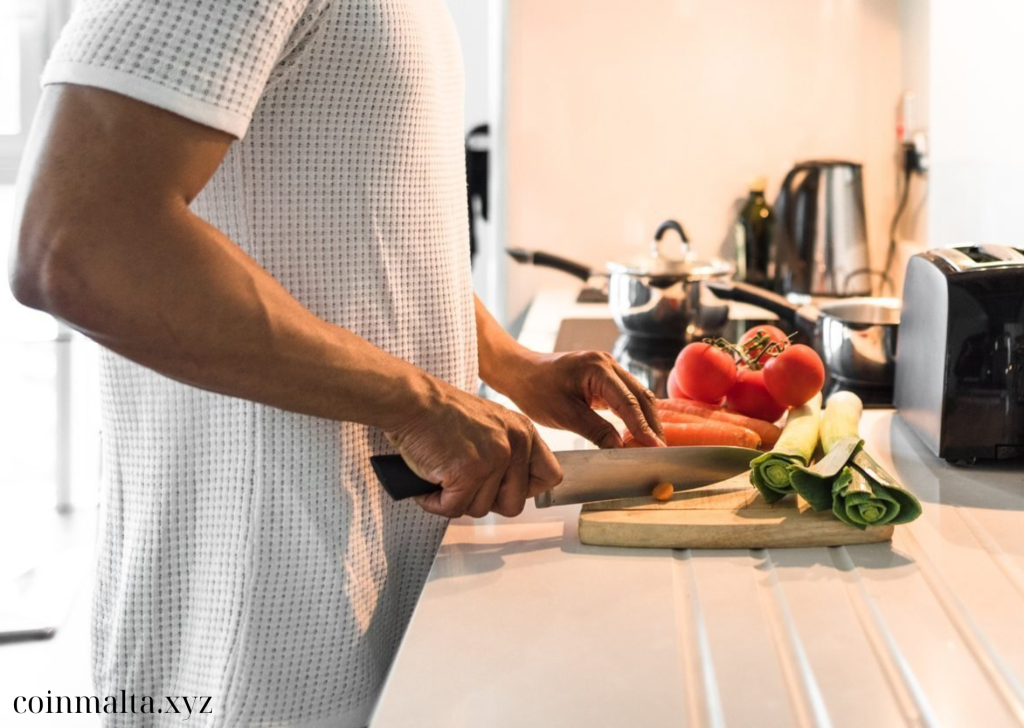Ensuring food safety is a critical aspect of maintaining good health and preventing foodborne illnesses. Proper handling, cooking, and storage of food are vital to minimizing the risk of contamination and spoilage. By adhering to fundamental food safety practices, you can create a safe cooking environment and enjoy meals that are both delicious and nutritious. This comprehensive guide provides essential food safety guidelines to help you achieve these goals in your kitchen.
Key Highlights
- Proper Food Handling: Techniques for safely preparing and storing food to avoid contamination.
- Safe Cooking Practices: Guidelines for cooking food to the right temperatures to ensure safety.
- Hygiene and Cleanliness: Steps to maintain a clean and sanitary kitchen environment.
- Storage Tips: Best practices for storing food to prevent spoilage and contamination.
- Understanding Food Labels: How to read and interpret food labels for safety and quality.
Proper Food Handling: Techniques for Safe Preparation
- Wash Your Hands Thoroughly
Instructions: Always wash your hands with soap and warm water before handling food, especially after touching raw meats, seafood, or eggs, and after using the restroom. Scrub all parts of your hands, including between fingers and under nails, for at least 20 seconds.
Why It’s Important: Proper handwashing eliminates harmful bacteria and viruses that can be transferred to food and cause illness.
- Keep Surfaces and Utensils Clean
Instructions: Clean countertops, cutting boards, and utensils with hot, soapy water before and after food preparation. Consider using a solution of water and bleach to sanitize surfaces that have been in contact with raw meats.
Why It’s Important: Keeping surfaces and utensils clean prevents the spread of bacteria from raw to cooked foods, reducing the risk of cross-contamination.
- Separate Raw and Cooked Foods
Instructions: Use separate cutting boards and utensils for raw meats, poultry, and seafood, and another set for vegetables and fruits. Store raw meats on the bottom shelf of the refrigerator to prevent juices from dripping onto other foods.
Why It’s Important: Preventing cross-contamination is crucial in avoiding the transfer of harmful bacteria from raw foods to ready-to-eat items.
- Use Safe Thawing Methods
Instructions: Thaw frozen foods in the refrigerator, in a bowl of cold water (changing the water every 30 minutes), or in the microwave. Avoid thawing food on the countertop, as this can lead to bacterial growth.
Why It’s Important: Safe thawing methods help prevent food from reaching the “danger zone” where bacteria can multiply rapidly.
Safe Cooking Practices: Ensuring Proper Food Temperatures
- Cook Food to the Correct Temperature
Instructions: Use a food thermometer to check that foods reach safe internal temperatures. For example, cook poultry to at least 165°F (74°C), ground meats to 160°F (71°C), and seafood to 145°F (63°C).
Why It’s Important: Proper cooking temperatures kill harmful bacteria and parasites, making the food safe to eat.
- Avoid the Danger Zone
Instructions: Keep hot foods hot (above 140°F or 60°C) and cold foods cold (below 40°F or 4°C). Do not leave perishable foods at room temperature for more than two hours, or one hour if the temperature is above 90°F (32°C).
Why It’s Important: The “danger zone” (40°F to 140°F or 4°C to 60°C) is where bacteria can grow quickly, increasing the risk of foodborne illnesses.
- Use Proper Cooking Techniques
Instructions: Avoid partially cooking food and finishing it later. Ensure that food is cooked evenly and to the recommended temperatures, especially when using methods like grilling or baking.
Why It’s Important: Uneven cooking can leave some parts of the food undercooked, which may not be sufficient to kill bacteria.
Hygiene and Cleanliness: Maintaining a Sanitary Kitchen
- Clean Fruits and Vegetables Properly
Instructions: Rinse fruits and vegetables under cold running water before consumption or cooking. Use a vegetable brush for produce with thicker skins, such as potatoes and melons.
Why It’s Important: Washing produce removes dirt, bacteria, and pesticide residues that could lead to contamination.
- Maintain a Clean Kitchen Environment
Instructions: Regularly clean kitchen appliances, such as refrigerators and ovens, and ensure that floors and walls are free from spills and debris. Use clean dishcloths and sponges to avoid spreading germs.
Why It’s Important: A clean kitchen helps prevent the accumulation of bacteria and pests that can contaminate food.
- Practice Safe Waste Disposal
Instructions: Dispose of food scraps and trash regularly to prevent odors and pests. Use separate bins for compostable and non-compostable waste, and ensure bins are lined and cleaned regularly.
Why It’s Important: Proper waste disposal prevents pests, odors, and contamination in your kitchen environment.
Storage Tips: Preventing Spoilage and Contamination
- Store Food at the Right Temperature
Instructions: Keep perishable items, such as meats, dairy, and leftovers, in the refrigerator at or below 40°F (4°C). Store frozen foods at 0°F (-18°C) or lower. Avoid overloading the refrigerator to ensure proper air circulation.
Why It’s Important: Correct storage temperatures prevent bacterial growth and spoilage of food.
- Understand and Use Food Labels
Instructions: Read food labels for expiration dates, storage instructions, and safety warnings. Follow these guidelines to ensure that food remains safe to consume.
Why It’s Important: Food labels provide crucial information on how to handle and store products to maintain their safety and quality.
- Properly Store Leftovers
Instructions: Store leftovers in shallow containers to cool them quickly and prevent bacterial growth. Label containers with the date and use them within 3-4 days, or freeze for longer storage.
Why It’s Important: Proper storage of leftovers helps maintain their safety and quality, preventing foodborne illness.
Understanding Food Labels: Key Information for Safety
- Expiration Dates and Use-By Dates
Instructions: Be aware of expiration dates and use-by dates on food packaging. Use foods before these dates for the best quality and safety.
Why It’s Important: Expiration dates indicate the point at which food may no longer be safe to consume or may lose quality.
- Storage Instructions
Instructions: Follow storage instructions on food labels, such as “keep refrigerated” or “store in a cool, dry place.” Proper storage helps maintain food safety and quality.
Why It’s Important: Adhering to storage instructions ensures that food remains safe to eat and retains its intended quality.
Conclusion
Adhering to these essential food safety guidelines can greatly reduce the risk of foodborne illnesses and ensure a safe and healthy cooking environment. By implementing proper food handling practices, cooking foods to the correct temperatures, maintaining cleanliness, and following storage and labeling tips, you can protect yourself and your family from foodborne hazards. These practices not only enhance the safety of your meals but also contribute to a more enjoyable and worry-free cooking experience.
FAQ
- How often should I clean my kitchen appliances? Kitchen appliances should be cleaned regularly, especially those that come into contact with food. Refrigerators and ovens should be cleaned every few months or as needed.
- What should I do if I find expired food in my pantry? Dispose of expired food immediately. Check your pantry regularly to ensure that food is used before it reaches its expiration date.
- How can I prevent cross-contamination when preparing food? Use separate cutting boards and utensils for raw meats and other foods, wash hands frequently, and sanitize surfaces and equipment regularly.
- Can I use the same dishcloth for cleaning dishes and wiping counters? It’s best to use separate cloths for different tasks to avoid spreading bacteria. Wash dishcloths frequently and use a clean one for each task.
- What are some signs that food may be spoiled? Signs of spoiled food include off smells, unusual textures, discoloration, and mold growth. If in doubt, it’s safer to discard the food.

